Nashik
Nashik – Kumbh Mela 2003
My first real encounter with a city of Nashik was in 2003, on the auspicious occasion of celebration of Kumbh Mela.
Kumbh Mela is a mass Hindu pilgrimage in which Hindus gather to bathe in a sacred river. It is held every third year at one of the four places by rotation: Haridwar, Allahabad, Ujjain and Nashik. Thus the Kumbh Mela is held in Nashik every 12 years. The holy rivers for dipping to wash off the sins are Ganges (Ganga) at Haridwar, the confluence of the Ganges Sangam and the Yamuna and the mythical Saraswati at Allahabad, Shipra at Ujjain and the Godawari at Nashik.
The name Kumbh Mela comes from Hindi and in the original Sanskrit and other Indian languages it is more often known as Kumbha Mela with an “a” at the end. Kumbha means pitcher and Mela means fair in Sanskrit. The pilgrimage is held for about one and a half months at each of these four places where it is believed that drops of nectar fell from the “kumbha” carried by gods after the sea was churned (stirred, agitated). The festival is the world´s largest congregation of religious pilgrims. It is impossible to get the exact numbers and the estimates of pilgrims bathing on the most auspicious day vary. But every time around 80 - 100 million people and ascetics take a holy dip into the respective rivers.
There are 14 Akhadas (religious schools) in Nashik, 11 belonging to Shaiva Sect and 3 to the Vaishnava Sect. The Shaiva Akhadas take a holy dip at Kushavart in Trimbakeshwar about 30 km from Nashik centre, the Vaishnava Akhadas perform rituals at Ramkund in Godavari. They all used to dip in Trimbakeshwar until 1838, when a clash between them led to a bloodshed and the Peshwa ruler requested Vashnava sadhus to move downstream to Ramakunda in Nasik.
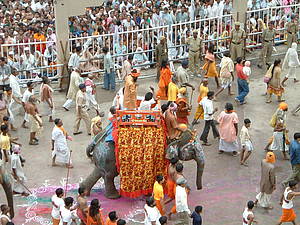
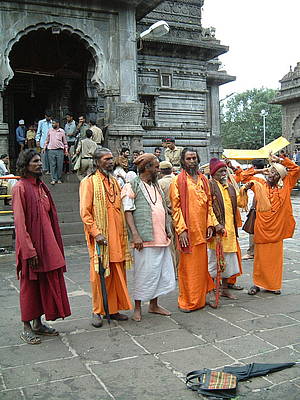
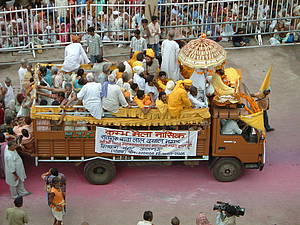
Sadhus in Trimbakeshwar and Nashik 2003
In the year 2003, the business of Dirk India started already to develop. The contract for 30 years delivery of fly ash was signed with Nashik Thermal Power Station and the factory for ash processing was in construction. We had business friends in Nashik who told us that Kumbh Mela is something not to be missed. However, I have since ever a phobia against even much smaller crowds and it was not an easy decision for me to participate. Anyway, everything was organized for us. We have rented a room in a hotel next to Ramkund, where we did not intend to stay overnight but it had a terrace on the roof. From there we could follow the procession, men, women, sadhus in their luxurious cars, on the back of elephants, in their orange robes or naked. The crowds were amazing. At the end of the day we were granted a police protection to get us out of the center of crowds. We must have been the only “white faces” all around in the sea of Hindu believers – immediately the TV Channel Sahara wanted an interview which was granted. It was an amazing experience but we were lucky. Two days later, there was a stampede in Nashik during which 39 pilgrims were trampled to death and 57 injured. The devotees had gathered on the banks of the Godavari river. Over 30 000 pilgrims were being held back by barricades in a narrow street leading to the holy spot Ramkund, so that the sadhus could take the ceremonial bath as first. Reportedly, some sadhus threw silver coins into the crowd and the subsequent scramble led to the stampede.
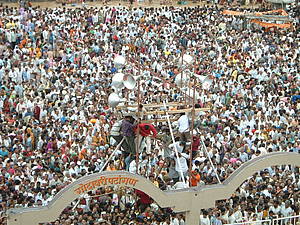
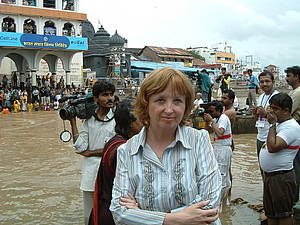
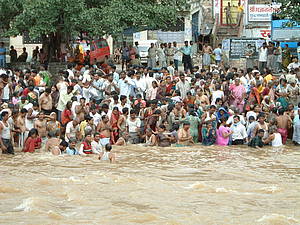
The next Kumbh Mela in Nashik will take place in 2015 from 15th August to 13th September. The celebration at different locations depends on the position of the planet of Jupiter and the sun. It is held in Nashik when Jupiter and the sun are in the zodiac sign Leo. The exact dates are calculated in advance according to a special combination of zodiacal positions of Sun, Moon, and Jupiter.


